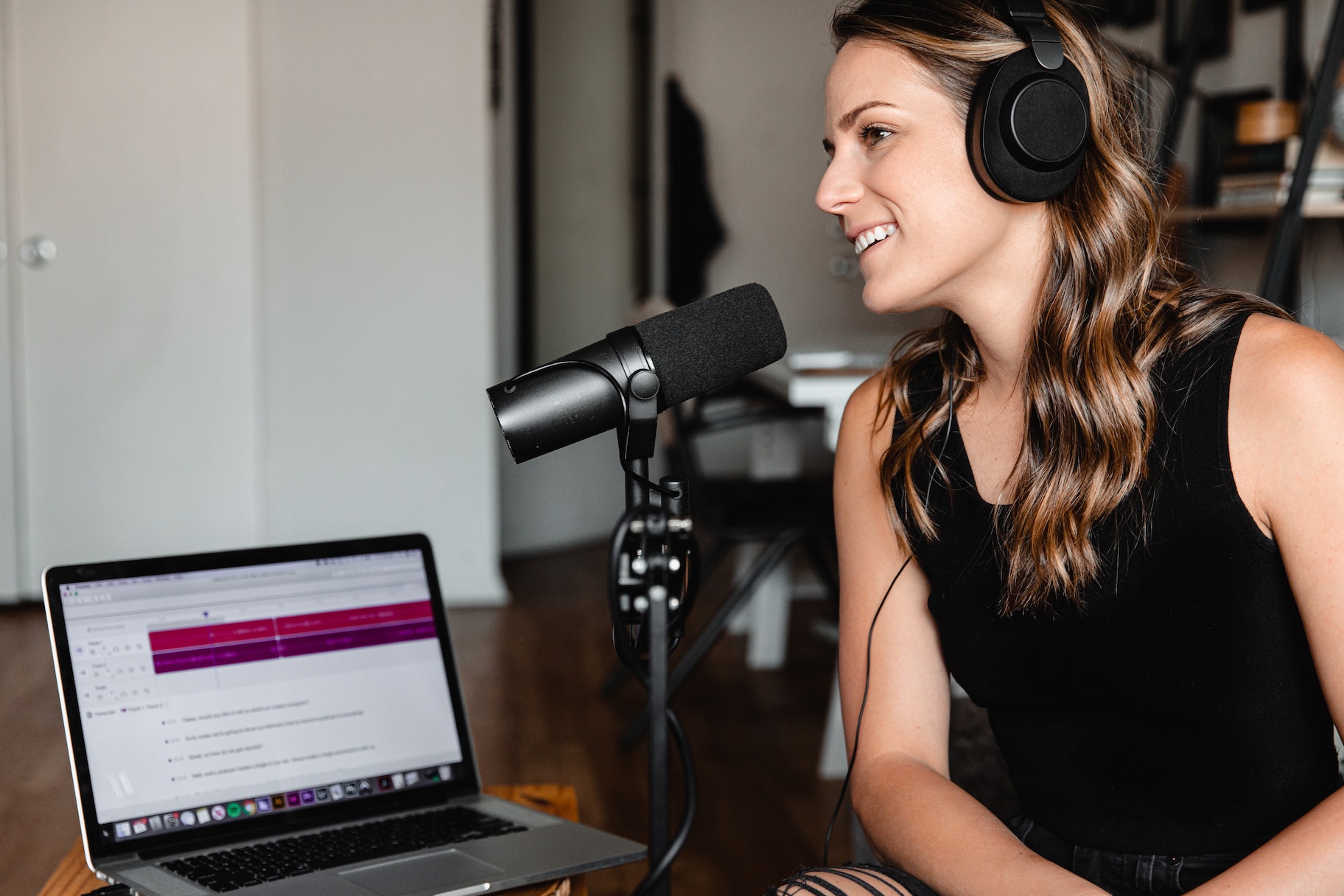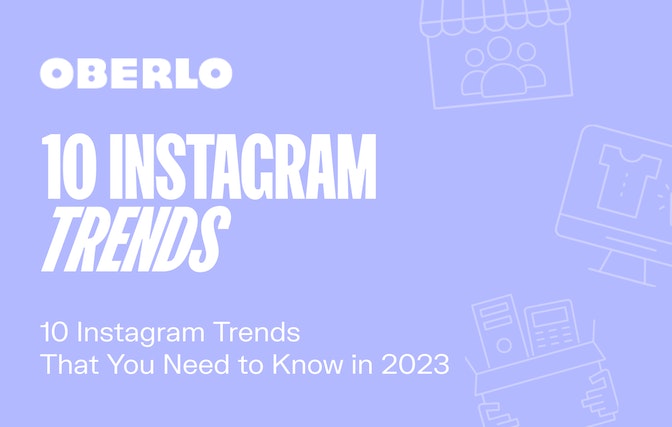Your Entrepreneurial Dream Begins Here!
With Shopify,launching your online store is effortless.Join Shopify today and kickstart your entrepreneurial dream!
Join Shopify todayIf you’re thinking of makinga podcast, your idea has a lot of potential. Statistics show that podcasting has seen a massive surge in recent years. In 2018, 75 million people in the US listened to podcasts. In 2024 that number is projected to be164 million.
You can find a podcast about virtually every topic, niche, and industry you can think of. And that’s the beauty of it—there’s a place for everyone in the world of podcasting.
But it may seem overwhelming to get started. No worries, we have your back. In this article, we’re going to break down, step-by-step, how you can start a podcast and grow it over time.



How to start a podcast in 13 steps
1. Choose a podcast theme
Your podcast should focus on things you’re already passionate about or interested in. This is crucial, as you need to pick something you’ll still want to record episodes about years from now (assuming that it’s successful!).
Here are some questions to ask yourself:
- What’s my goal for making this podcast?
- What’s my “why”—the reason I’m doing it in the first place?
- Who will my audience be?
- What’s my compelling premise, or the “special sauce” that makes my podcst stand out?
Once you have your idea, it’s important to do a stress test. Try and brainstorm 20 episode ideas, including any interviews you might do along the way. If you can’t think of 20 off the bat, you’ll probably run out of ideas before the show gets traction.

2. Decide on a podcast format
Next, you need to figure out the type of podcast you’ll be putting out, in terms of structure and flow. Here are some examples:
- News.Usually a quick, snappy, and easily digestible format.
- Scripted nonfiction.Generally, these will focus on one main topic for a whole season, and include educational podcasts.
- Scripted fiction.Like an audiobook, but broken down into multiple episodes and even seasons.
- Interviews.The host(s) sit down with different people to pick their brains and get insights.
You’ll also want to consider episode length and frequency, or how often you’ll publish.
3. Create your podcast brand
As with any business, your brand is a make-or-break between capturing people’s interest or letting them scroll right past you. Here are some things to consider for making a killer podcast brand:
- Podcast name.Keep it short, interesting, and easy to say. Ditch unnecessary words like “podcast” or “the” at the beginning.
- Podcast description.Spend some time on making it enticing. Shoot for 400 to 600 words.
- Podcast cover art.Make it eye-catching and colorful. Don’t use too many words. Try usingCanvaor hiring a designer on freelance gig websites likeFiverr,Upwork, orGuru.
- Podcast category.From comedies to true crime to politics to self-help, your category is a key way to find your audience.
Below is a list of Spotify’s main categories.

4. Get your podcasting equipment
Having the right podcast equipment isn’t a nice-to-have—it’s a must-have. After all, nobody will listen to your podcast for long if it doesn’t sound great. The following is a list of equipment to help you record a high-quality podcast:
- USB or dynamic mic.USB mics likeBlue Yetiare the easiest to work with. You can record with them or consider a dynamic mic likeShure SM7Bif you’re concerned about background noise interfering with your podcast’s audio.
- Pop filter.A pop filter prevents the clicking noises your mouth makes while speaking near the microphone from being recorded. You can get one for $10 or so.
- Microphone stand.A microphone stand allows for hands-free podcast recording. It’s an essential piece of podcast recording equipment that fits nicely on your office desk. You can also easily adjust the distance and height from your mouth to move around while you podcast.
5. Choose recording software
Besides hardware, you’ll need audio software to record the sound from your microphone and save it as an MP3 file. Here are some good options:
- Adobe Audition(Mac/PC; $20.99 per month).如果你想要一个完整的套件of audio editing features, Adobe offers them in Audition.
- GarageBand(Mac; free).GarageBand comes pre-installed in MacBooks and lets you record the audio from your podcast microphone.
- Audacity(Mac/PC; free).Audacity is easy to use and a great alternative to paid podcast editing software. It also has a lot of online tutorials to help beginners get started.
6. Outline your first podcast episode
Good content is incredibly important if you want to succeed in podcasting. An outline is a great way to make sure you’re giving it the attention it deserves.
Consider the purpose or take-away of the episode first, then work backward. You’ll need a hook or teaser to draw in listeners, guest intros, talking points including guest questions, transitions to new topics, and a closing to wrap it all up.
Don’t worry about writing a fully comprehensive script unless your category is a scripted format, like fiction or nonfiction.
7. Record your podcast

Now it’s time for the magic! Here are some tips for recording a great first episode:
- Find a quiet space that preferably doesn’t have much echo. You can even use blankets to cover wood floors or walls to prevent it.
- Make sure your computer is set to take audio input from your microphone. If you have a condenser mic, run phantom power.
- Don’t record too loud or it can alter your final product. Test with yourself laughing or speaking on a higher-end to make sure your decibel meter stays yellow and never turns red.
- Make a high-resolution audio file in WAV or AIFF format. You’ll likely convert the file type to publish, but these will give the best audio quality.
8. Record an intro and outro
Your intro and outro will play the beginning and end of every episode, so make them good. Make sure your intro explains who you are, what the podcast is about, and why they should stick around and listen.
Your outro should give listeners a call to action, or ask them to do something once the episode is over. This can include subscribing on Apple Podcasts on Spotify, following you on Instagram, contributing to your Patreon, or signing up for your newsletter.
Cap your intro and outro at 30 seconds max each.
9. Edit your podcast
The editing phase brings it all together. You’ll have the opportunity to tighten it up by cutting out all the “ums” and “uhs,” getting rid of the sound gaps, and trimming down conversations that might have gone on a tangent.
Here are some more editing tips:
- Avoid making music too loud
- Don’t use copyrighted music!
- Use noise reduction, equalization, and compression
- Use a high-pass filter to avoid unwanted rumbling sounds
- Use crossfading to transition to different audio clips
If this seems like too much of a learning curve, consider hiring a professional editor on sites likeFiverr,Upwork, orGuru.
Once you’re done, add your intro and outro, insert any ads, and you’re ready to make your debut.
10. Decide on a podcast hosting service
A common misconception about podcasts is that you can upload them directly to platforms like Spotify, Stitcher, or Apple Podcasts.
The reality, however, is that you need to host your audio files before you can submit them to any podcast directory.
To do so, you can use a podcast hosting platform, such as:
Once you have your podcast hosted, submit an RSS feed to place your episodes on podcast platforms. You can do this manually or through the dashboard of your podcast hosting provider.
11. Choose a podcast directory
There’s no shortage of directories where you can list your podcast. Below, I will list the most popular, but feel free to distribute your content beyond these directories. Note that you’ll need to submit your podcast music, artwork, name, description, etc.
Apple Podcasts
Apple Podcasts is the largest podcast directory and should definitely be your first choice. It attracts a wide range of listeners and has various categories for podcast submissions. To create an account and submit your show, visit theApple Podcasts for Creatorspage.
Stitcher
Stitcher is another great place to get exposure for your podcast. As the second largest podcast directory, Stitcher is home to popular podcasts that discuss interesting topics, from leadership marketing to homebrewing beer.
Google Podcasts
Submitting a podcast on Google Podcasts can help you reach more podcast listeners. You can add a podcast by going toGoogle Podcasts Managerand submitting your podcast’s RSS feed.
Spotify
The popular music streaming service is also a directory for podcasts. It's growing quickly among podcast listeners, so you’ll want to get your show in its recommendations to enhance visibility.
12. Promote your podcast episodes
To get noticed by podcast directories and increase your chances of being featured, you’ll want to generate buzz around your podcast. To do this:
- 创建一个登陆pageto let people know what you have planned and give them a chance to opt into your mailing list.
- Announce the launch to your email list and ask them to leave a review after listening. Reviews increase your odds of getting featured on directories.
- Launch your podcast with a few episodes (ideally three) so listeners know you’ll be posting content regularly.
- Create transcriptions of your episodes to get found through search engines.
- Use tools likerepurpose.ioto create little snippets of your podcast audio in video format and publish them onsocial platforms.
- Leverage your listeners’ reach to spread the word about new episodes.

13. Monetize your podcast
There are a few different ways to make money podcasting:
- Direct support.This is when a podcast host asks listeners for donations to support the show. If your audience loves your content, they’ll likely contribute some cash to help keep the podcast running.
- Sponsorships.Sponsorships are where the host promotes a sponsor during the show. Your earnings from sponsorships depend on how many downloads your show gets. Most sponsors pay on a cost-per-1,000 basis, with average rates between $15 to $50 CPM.
- Selling products.Another way podcasts make money is byselling productsthat complement their theme. This can include merchandise, courses, books, live events, consulting services, and more.
After you have a few episodes released and have begun to build an audience, you can start thinking about monetizing your podcast.
Get out there and start creating
You can get started on your podcast today. It can be a daunting task, but all that’s left to do now is to take your first steps. To get your creative juices flowing, try recording a first episode right now—you can even use your phone’s recording app.
This “rehearsal” will help you get comfortable with your voice, tone, and style. Then, when you have your persona down, you can record it for real on your new equipment. From there, just cruise through the steps we talked about to create a successful podcast. You got this.
Starting a podcast FAQ
Do podcasts make money?
Podcasts that get traction make $20 to $50 for every 1,000 host-read podcast ads on average. With US podcast advertising spending expected to reach$4 billion in 2024, the time to start a podcast business that makes money is now.
你可以开始免费播客?
Yes, you can launch a podcast for free by using podcast hosting services like Buzzsprout and recording and uploading your shows to sites like Spotify, Google Podcast, and Apple Podcasts for free. However, you’ll want to invest in a good microphone to make your podcast sound better.
What are some free podcast hosting sites?
- Acast
- Buzzsprout
- Castbox
- Podbean






